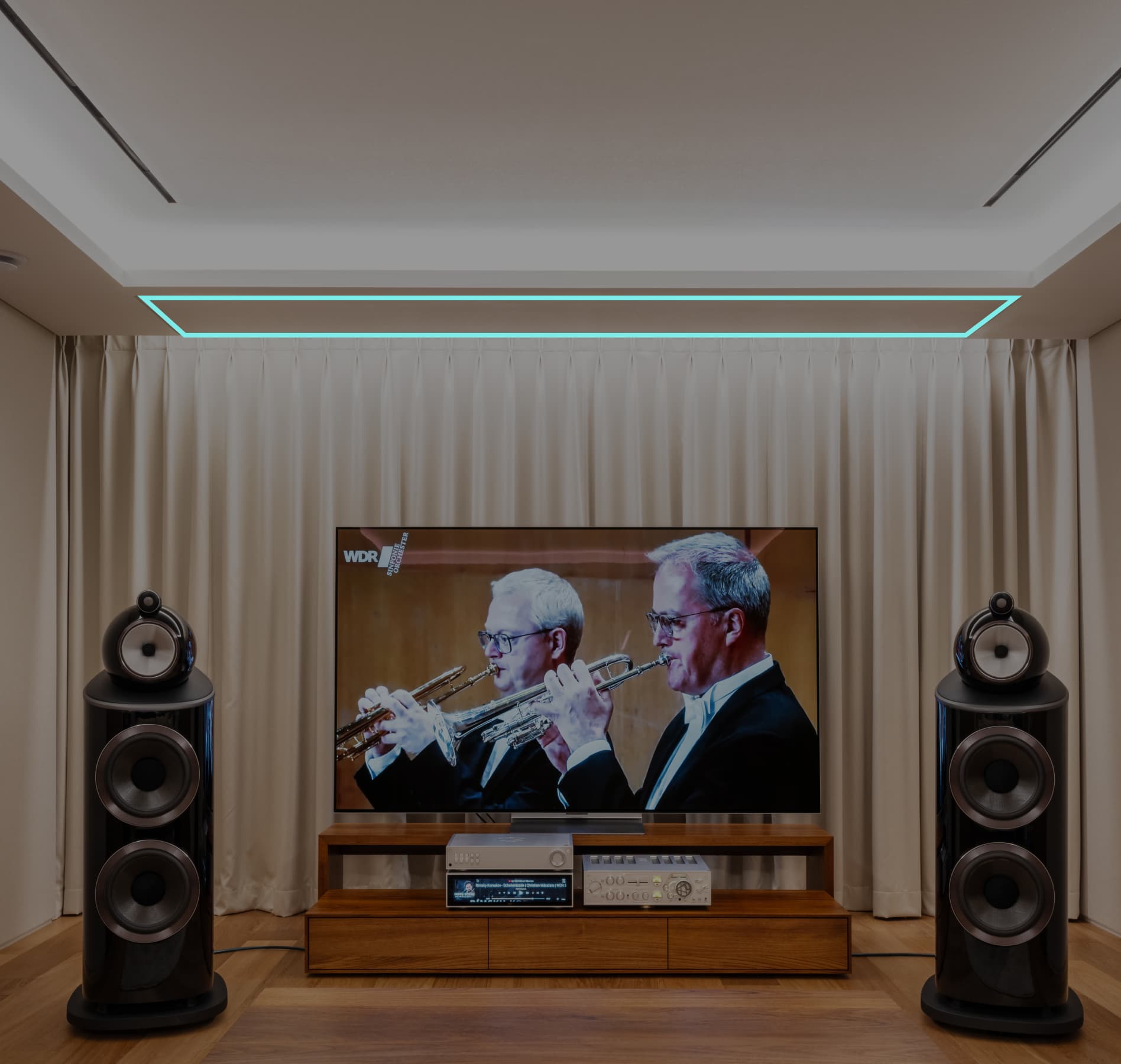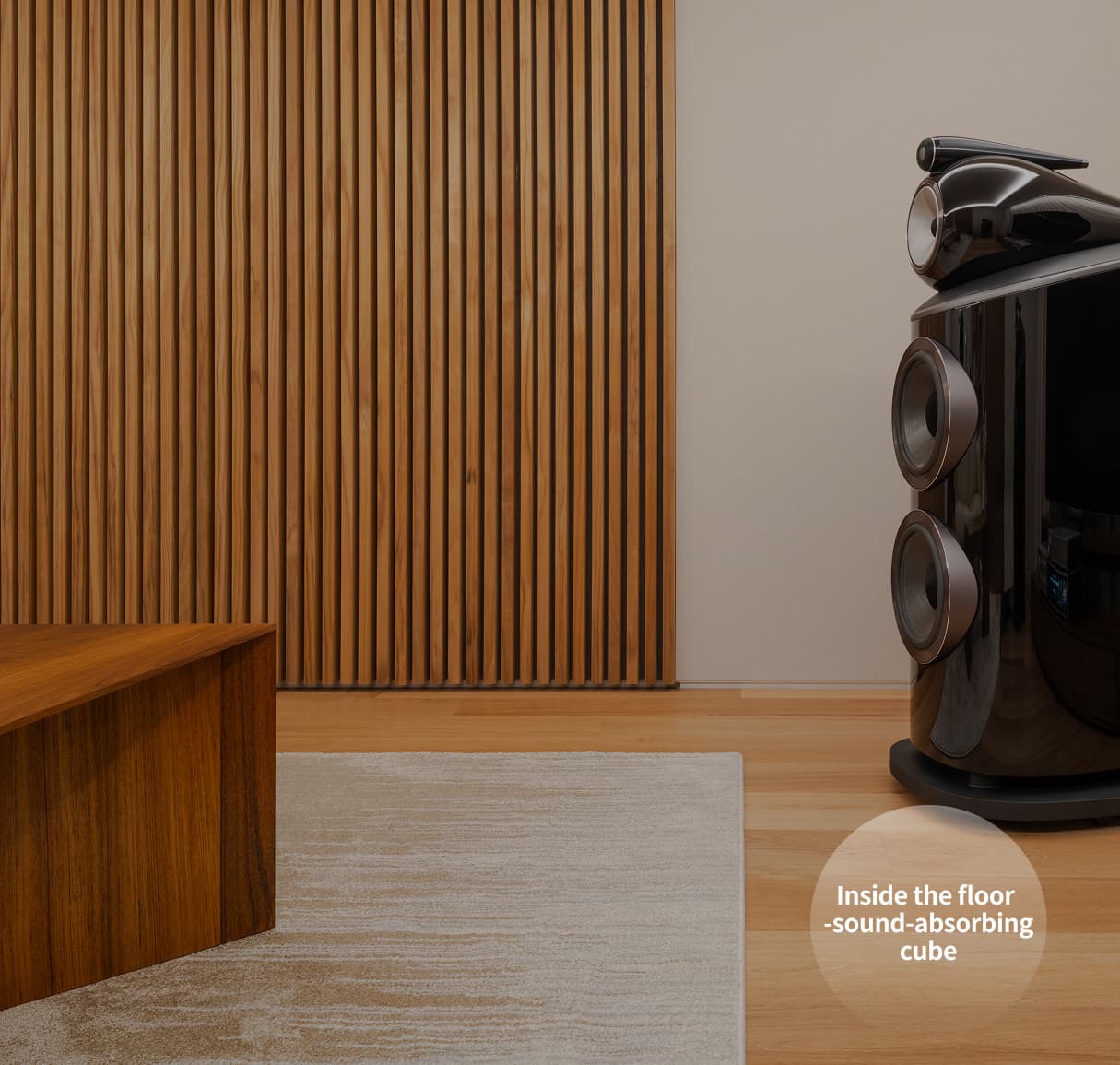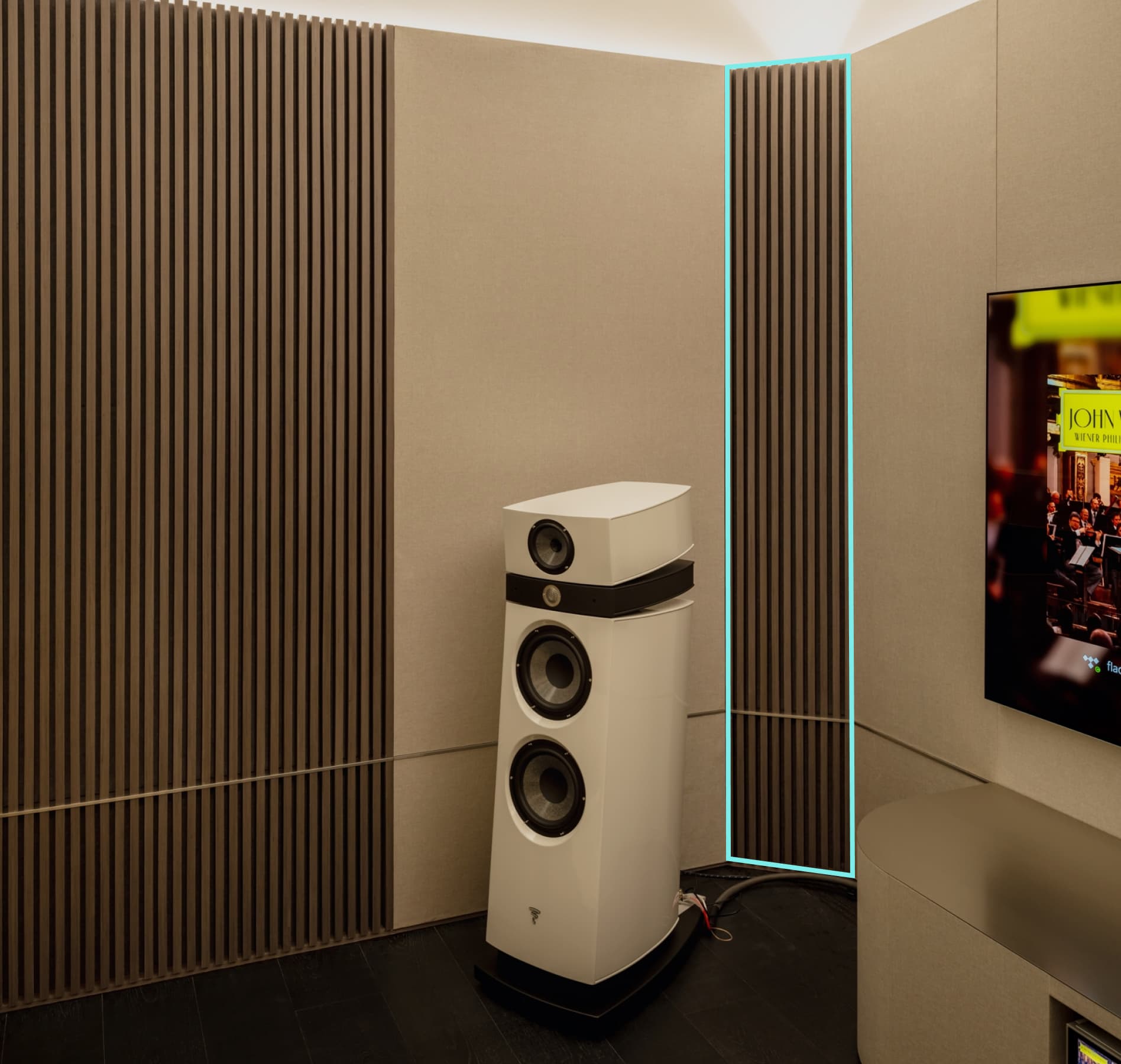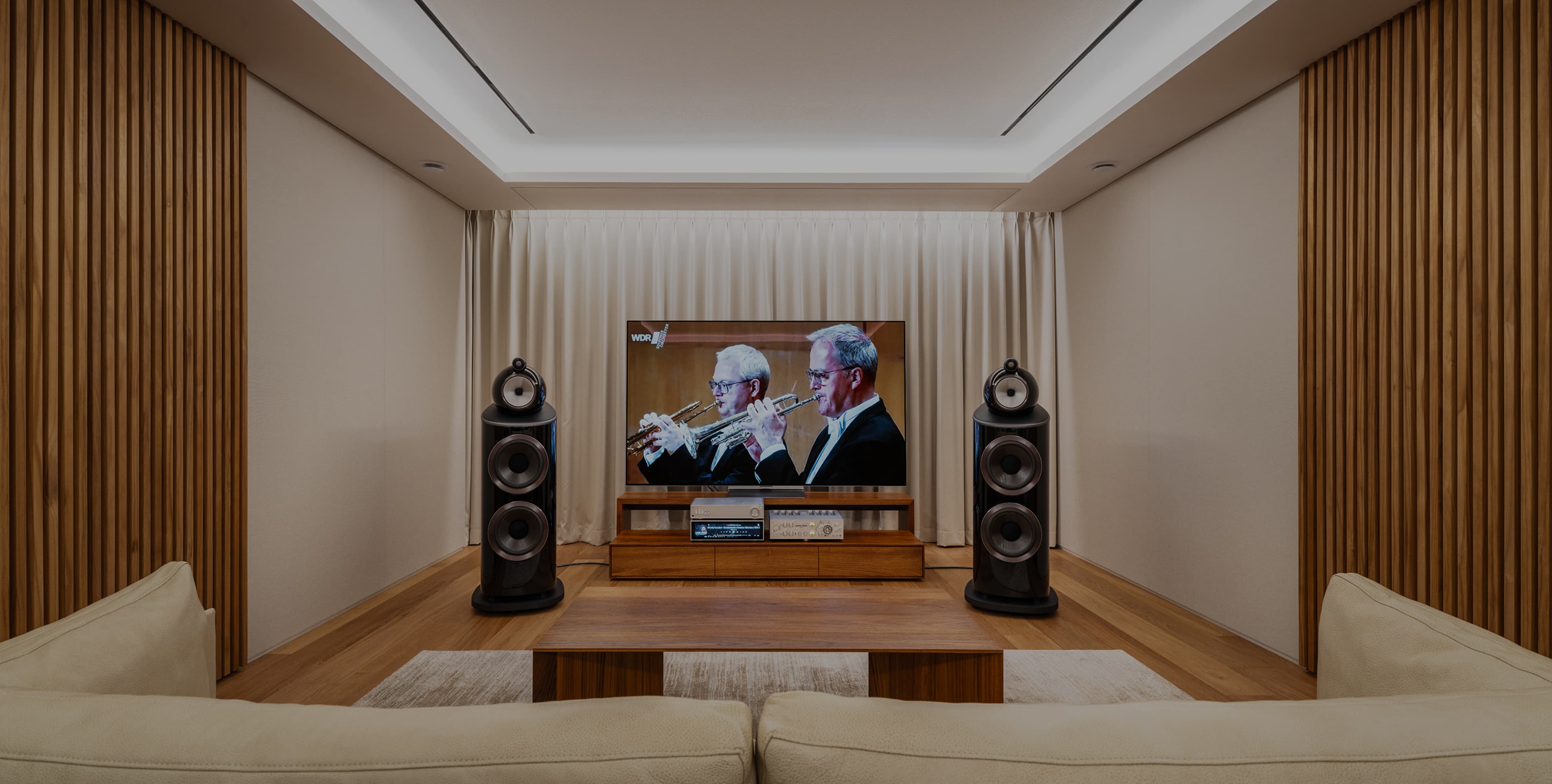
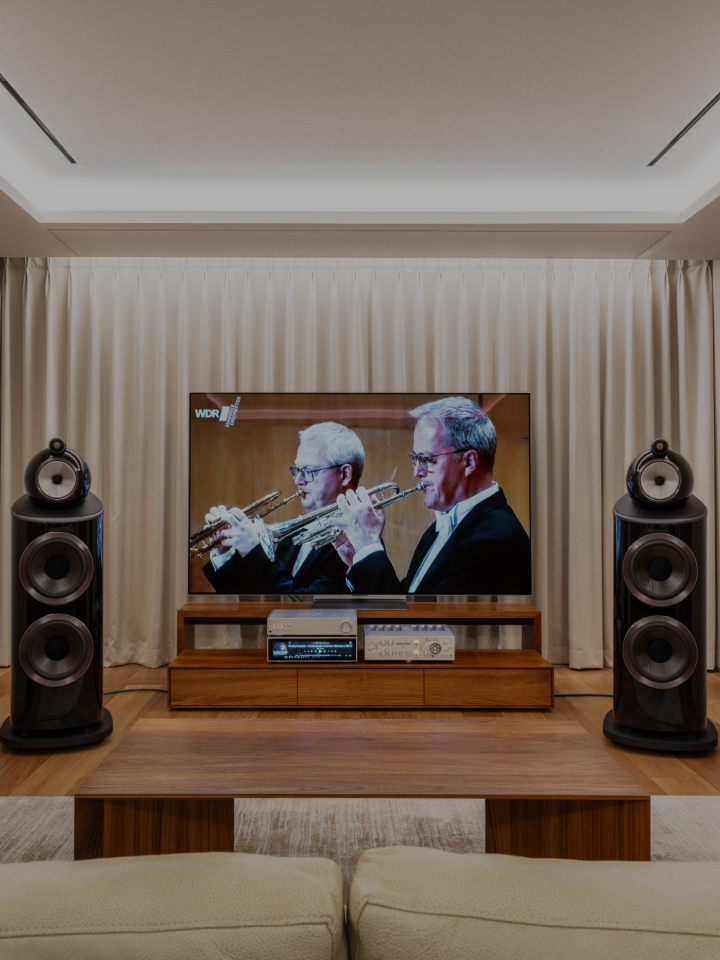
Small indoor acoustics is a specialty of overcoming acoustic limitations
and implementing optimal sound quality in limited spaces such as
home studios, control rooms, and small performance halls.
It systematically analyzes and precisely orchestrates unique acoustic problems
in small spaces, providing an excellent listening environment and work efficiency.
Its core is to organically combine sound absorption, diffusion, and bass management
technologies to minimize acoustic distortion in space and complete a precise and balanced
acoustic environment. This allows for a rich and immersive sound experience beyond
the constraints of space.
Acoustic Design

absorption
management
sound energy into thermal energy
Sound wave reflections from walls, ceilings, and floors occur intensively in small rooms. High-performance sound-absorbing materials such as sound absorption panels and base traps are used to suppress unwanted reflections and reverberations, enhancing the clarity and clarity of sound.
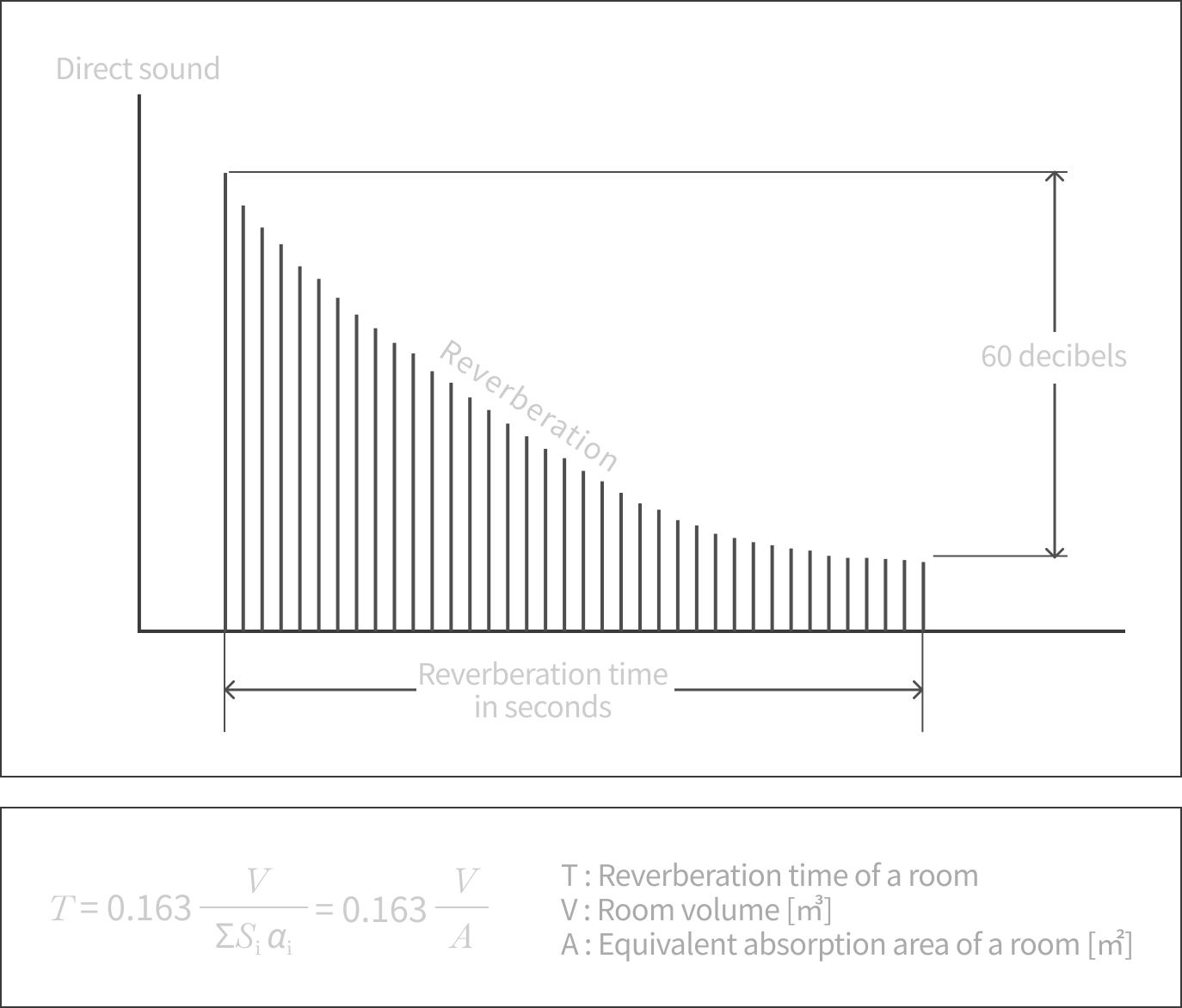
reverberation time
Design the shape of the room so that there are no flutter echoes and sound concentrations. The reverberation time is about 0.4 seconds, so the reverberation time relative to the volume is designed to be appropriate for listening to music.
The reverberation time is the time it takes for the negative
energy generated in the indoor space to be reduced to
-60 dB (-1/1,000,000 times).
The reverberation time is proportional to the volume and
inversely proportional to the sound absorption area, so it is
designed by accurately calculating the application area of
materials with an appropriate blemish rate.
Actual reverberation time measurements use T20 (-5dB to -25dB)
and T30 (-5dB to -35dB) as influences of background noise.
and flutter echo prevention
-
Room Modes
The size and shape of the space can cause distortion by forming standing waves at certain frequencies. To address this, we strategically place sound absorbers and diffusers to mitigate excessive resonances and provide a balanced frequency response.
-
Flutter Echoes
Flutter echoes caused by repeated reflections of sound waves between parallel surfaces can be removed by installation of angled surfaces, sound absorption, or diffuser.
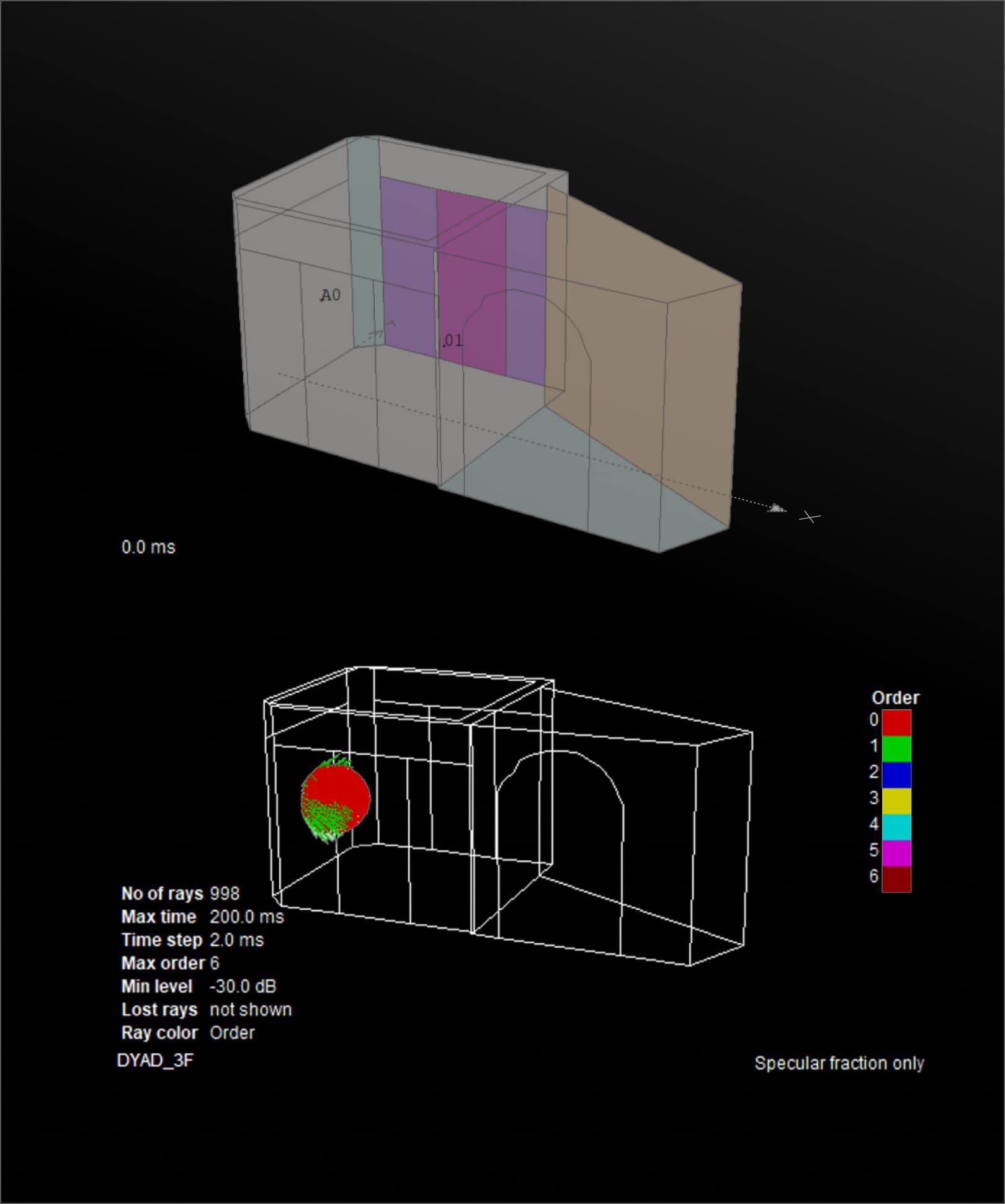
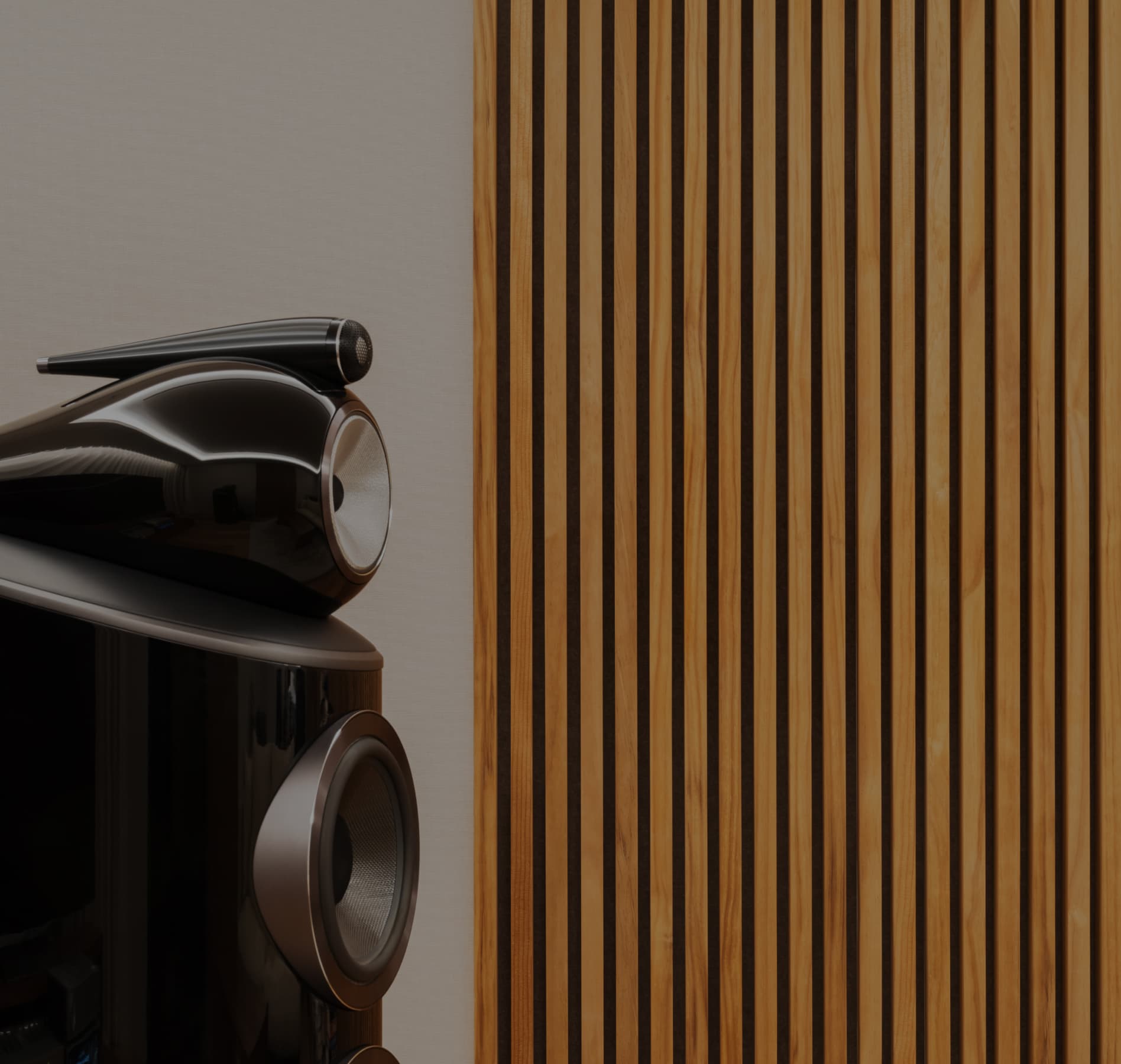
Sound diffusers evenly disperse sounds, reducing the intensity of direct reflection and enriching the sound field of space. This is effective in preserving a sense of space while reducing echoes.
Reverberation Time
Managing reverberation time is essential in small spaces. Finely tune your listening environment by suppressing excessive reverberations that impair sound clarity.
*The time it takes for the sound to attenuate by 60 dB after the sound source has stopped
- · Target reverberation time: 0.3 sec
- · Measurement result: 0.3 sec
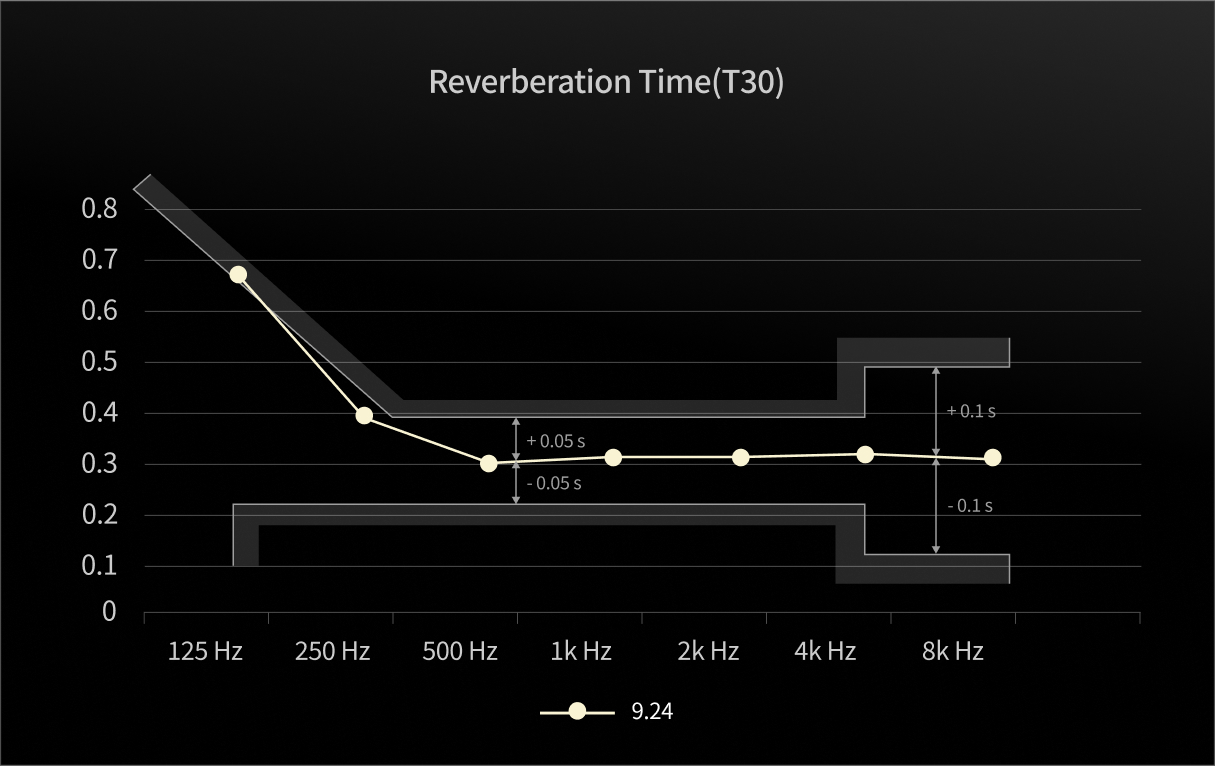
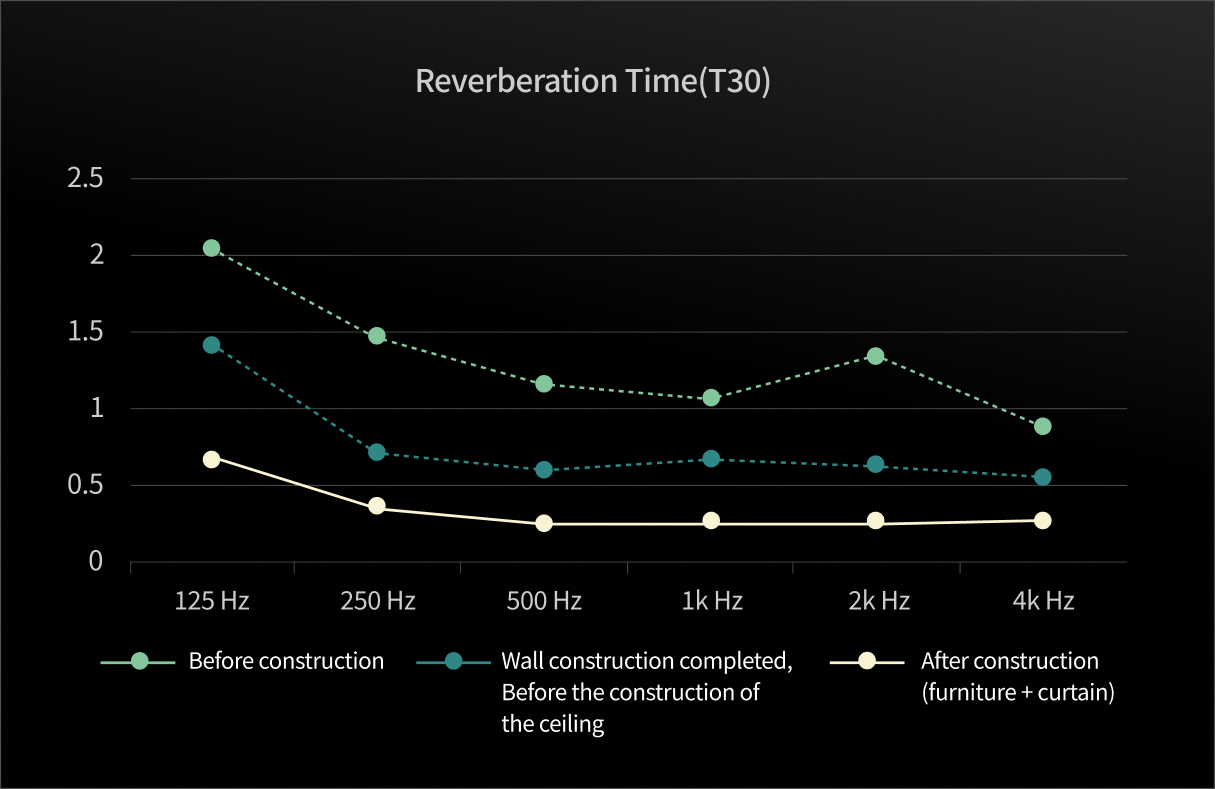
| Frequency | 125 Hz | 250 Hz | 500 Hz | 1 kHz | 2 kHz | 4 kHz |
|---|---|---|---|---|---|---|
| Before construction |
2.05 | 1.47 | 1.17 | 1.07 | 1.35 | 0.88 |
| Wall construction completed, Before the construction of the ceiling | 1.42 | 0.72 | 0.61 | 0.68 | 0.64 | 0.57 |
| After construction (furniture + curtain) |
0.68 | 0.37 | 0.27 | 0.28 | 0.28 | 0.29 |
Low frequencies are characterized by intensive accumulation in corners in small spaces. The base trap absorbs this low-frequency energy to maintain acoustic balance and effectively control excessive bass.

